The Goodman ARUF Installation Manual provides a comprehensive guide for installing, maintaining, and troubleshooting the ARUF series air handlers. It ensures safe and efficient system operation.
1.1 Overview of the Goodman ARUF Series
The Goodman ARUF Series is a line of air handlers designed for high-efficiency heating and cooling systems. These units are known for their versatility, reliability, and energy-saving features. They are compatible with various HVAC systems, including heat pumps and condensers, making them a popular choice for residential and light commercial applications. The ARUF Series features a multi-speed PSC blower motor, an all-aluminum evaporator coil, and a direct drive system for consistent airflow. These components ensure quiet operation, improved indoor air quality, and enhanced system performance. The series is also designed to meet energy efficiency standards, making it a cost-effective solution for homeowners seeking durable and efficient climate control systems.
1.2 Importance of Proper Installation
Proper installation of the Goodman ARUF Series is crucial for optimal performance, efficiency, and safety. Incorrect installation can lead to reduced system lifespan, increased energy bills, and potential safety hazards. Ensuring that all components are correctly mounted, wired, and configured according to the manual guarantees reliable operation. Proper installation also ensures compliance with local building codes and energy efficiency standards. Additionally, it minimizes the risk of system malfunctions and extends the warranty coverage. Therefore, adhering to the installation guidelines is essential for maximizing the benefits of the ARUF Series and maintaining a safe and comfortable indoor environment. Always follow the manual’s instructions to achieve the best results;
1.3 Safety Precautions and Warnings
Before starting the installation, it is essential to review and follow all safety precautions outlined in the Goodman ARUF Installation Manual. Ensure the power supply is disconnected to prevent electrical shocks or injuries. Wear appropriate protective gear, including gloves and safety glasses, when handling sharp or heavy components. Properly vent the area to avoid inhaling harmful substances. Familiarize yourself with emergency procedures and ensure all tools and equipment are in good working condition. Ignoring safety guidelines can lead to serious accidents or system damage. Always prioritize safety to protect yourself and ensure a successful installation. Compliance with these precautions is mandatory for a safe and efficient process.
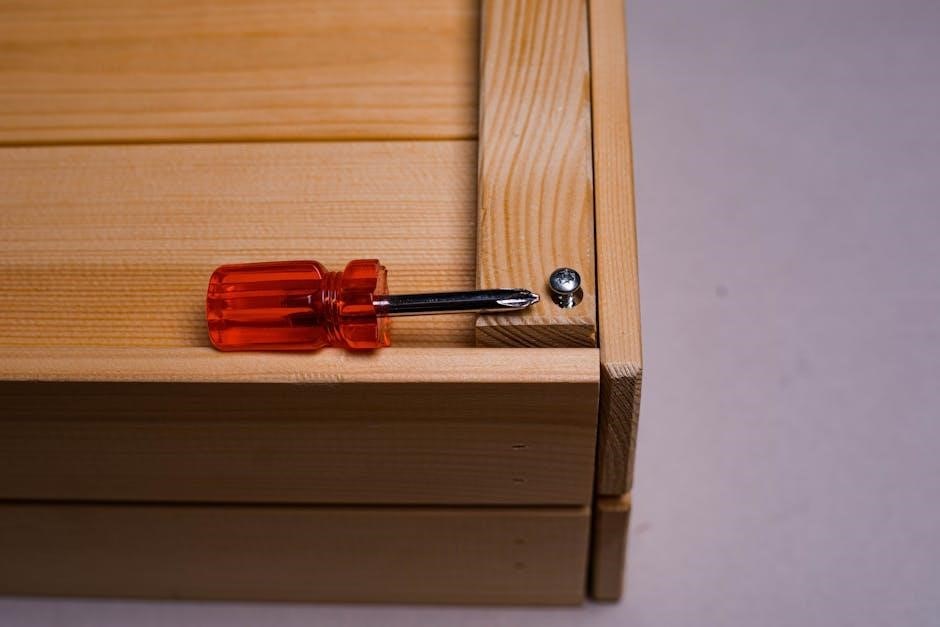
Pre-Installation Requirements
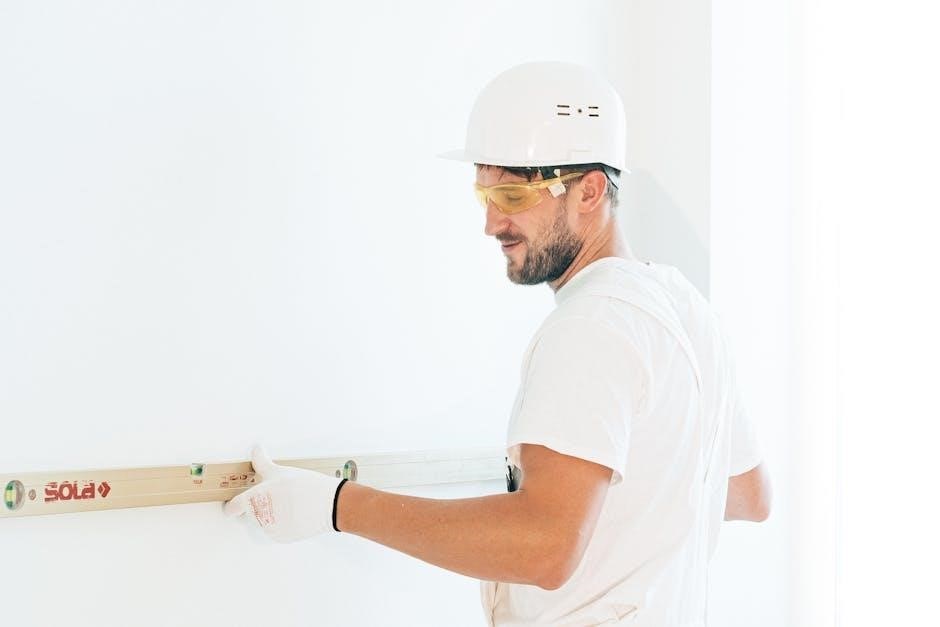
Before installing the Goodman ARUF, ensure the site is prepared, and all necessary tools and components are available. Verify compatibility and system specifications to guarantee proper functionality and efficiency.
2;1 Understanding the System Components
The Goodman ARUF system comprises essential components like the air handler, evaporator coil, blower motor, and control board. Familiarize yourself with each part’s function and location to ensure correct installation. The air handler houses the blower motor, which circulates air, while the evaporator coil facilitates heat exchange. The control board manages system operations, including temperature and airflow settings. Proper understanding of these components is crucial for efficient installation and troubleshooting. Refer to the Goodman ARUF installation manual for detailed diagrams and descriptions to avoid errors during the setup process.
2.2 Tools and Materials Needed
Installing the Goodman ARUF requires specific tools and materials to ensure a safe and proper setup. Essential tools include a screwdriver, wrench, pliers, and wire strippers for electrical connections. Materials needed may consist of insulation, ductwork, and drain hoses. Additionally, a P-trap should be installed as specified in the manual to prevent water damage. Always refer to the Goodman ARUF installation manual for a complete list of required tools and materials. Proper preparation ensures efficiency and avoids potential issues during the installation process, guaranteeing optimal performance of the HVAC system. Familiarize yourself with these requirements beforehand to streamline the setup.
2.3 Site Preparation and Inspection
Before installing the Goodman ARUF, thorough site preparation and inspection are crucial. Ensure the installation area is clean, level, and free from obstructions. Verify that all necessary utilities, such as electrical and drainage connections, are accessible. Inspect the surrounding space for any potential hazards, such as water leaks or structural issues. Check the condition of existing ductwork and ensure compatibility with the ARUF unit. Proper preparation prevents delays and ensures a smooth installation process. Always follow the guidelines outlined in the Goodman ARUF installation manual to maintain safety and system efficiency. A well-prepared site guarantees optimal performance and longevity of the HVAC system.
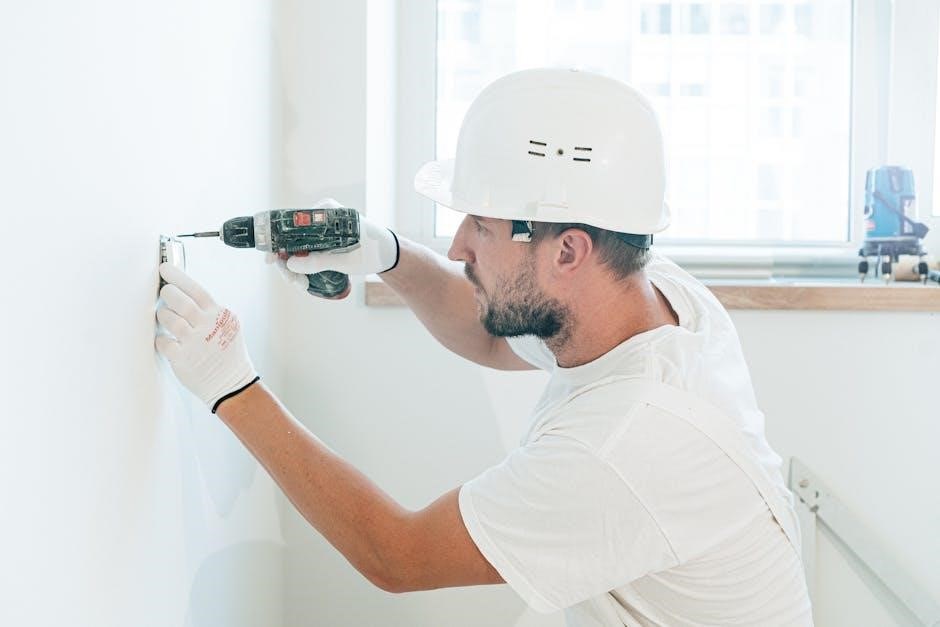
Installation Steps
The Goodman ARUF installation involves mounting the unit, connecting electrical systems, and installing the evaporator coil. Ensure proper drainage and refer to the manual for specific instructions.
3.1 Mounting and Leveling the Unit
Mounting and leveling the Goodman ARUF unit is crucial for optimal performance. Ensure the unit is placed on a stable, flat surface. Use the provided mounting hardware to secure it firmly. Check the unit’s level using a spirit level, both front-to-back and side-to-side. If necessary, adjust the mounting brackets to achieve proper alignment. Improper leveling can lead to reduced efficiency, increased noise, and potential system damage. Refer to the installation manual for specific torque specifications and alignment recommendations. Always follow safety guidelines to avoid injury or equipment damage during the mounting process. Proper installation ensures reliable operation and extends the unit’s lifespan.
3.2 Connecting Electrical and Wiring Systems
Connecting the electrical and wiring systems for the Goodman ARUF unit requires careful attention to detail. Ensure all connections are secure and meet local electrical codes. Begin by disconnecting the power supply before starting any work. Use the wiring diagram provided in the manual to identify and connect the appropriate terminals. The system typically requires a minimum of five wires for heat pump operations, including the reversing valve connection. Double-check all wire connections to prevent short circuits or malfunctions. Proper grounding is essential for safety and performance. Consult a licensed electrician if unsure, and always adhere to safety protocols to avoid electrical hazards. Accurate wiring ensures efficient and safe system operation.
3.3 Installing the Evaporator Coil and Drainage System
Installing the evaporator coil and drainage system is a critical step in the Goodman ARUF setup. Begin by mounting the evaporator coil in the designated area, ensuring it is level and securely fastened. Next, connect the drainage system, making sure the P-trap is correctly installed to prevent water damage. Properly route the drain line to a suitable location, avoiding kinks or blockages. Refer to the manual for specific instructions on connecting the coil to the system. Ensure all connections are watertight and adhering to local plumbing codes. Finally, test the drainage system to confirm it functions correctly before completing the installation. This ensures efficient operation and prevents potential issues like water leaks or mold growth. Always follow safety guidelines and manufacturer recommendations for optimal results. Proper installation guarantees reliable performance and longevity of the system. Adherence to these steps is essential for maintaining warranty validity and ensuring compliance with local regulations.
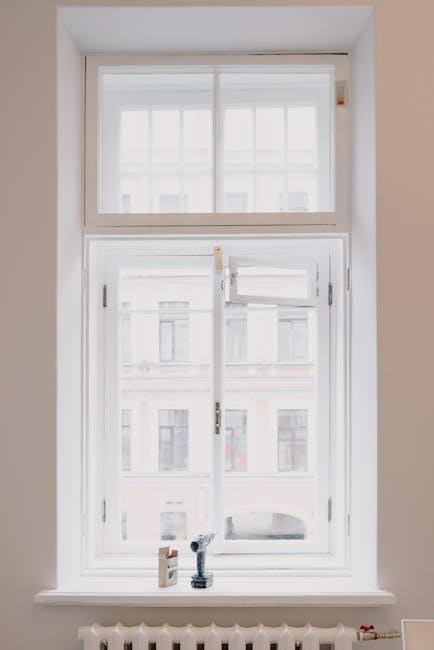
Product Features and Specifications
The Goodman ARUF series features an all-aluminum evaporator coil for durability and a direct drive, multi-speed PSC blower motor for efficient airflow. It meets energy efficiency standards.

4.1 Key Components of the ARUF Series
The Goodman ARUF series includes a robust all-aluminum evaporator coil for optimal heat transfer and durability. It features a direct drive, multi-speed PSC blower motor, ensuring efficient airflow control. The system is designed with a SmartFrame cabinet for easy access and serviceability. Additional components include a check flowrator for precise refrigerant flow in cooling and heat pump applications. The unit is compatible with R-410A refrigerant, aligning with environmental standards. These components collectively enhance performance, energy efficiency, and system reliability, making the ARUF series a reliable choice for heating and cooling solutions.
4.2 Technical Specifications and Compatibility
The Goodman ARUF series is compatible with R-410A refrigerant, ensuring compliance with environmental regulations. It operates with a multi-speed PSC blower motor, offering flexible airflow options. The unit is designed to integrate seamlessly with Goodman or Amana condensers and heat pumps, as indicated by ARI certifications. Technical specifications include a direct drive system and an all-aluminum evaporator coil, enhancing durability and heat transfer efficiency. Compatibility with various heating and cooling systems makes the ARUF series versatile for different installation needs. Proper pairing ensures optimal performance and energy efficiency, meeting both residential and light commercial requirements effectively.
4.3 Energy Efficiency and Performance
The Goodman ARUF series is engineered for high energy efficiency, featuring a multi-speed PSC blower motor that optimizes airflow while minimizing energy consumption. With an all-aluminum evaporator coil, the unit ensures superior heat transfer, enhancing overall system performance. Designed to meet rigorous energy standards, the ARUF series delivers reliable heating and cooling while maintaining low operational costs. Compatibility with advanced thermostats and smart home systems further improves efficiency. By adhering to Energy Star guidelines, this series provides eco-friendly solutions for homeowners seeking both performance and sustainability.
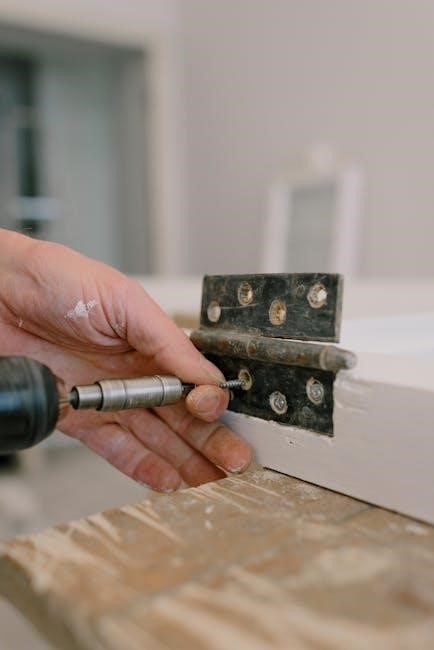
Post-Installation Checks
Post-installation checks ensure the system operates safely and efficiently. Verify proper airflow, electrical connections, and drainage. Test all functions to confirm optimal performance and reliability.
5.1 Testing the System for Proper Functionality
Testing the system ensures all components function as intended. Begin by checking the thermostat operation, verifying heating and cooling modes. Inspect electrical connections for stability and continuity. Check airflow across the evaporator coil to ensure proper heat transfer. Test the drainage system for leaks or blockages. Verify that the blower motor operates at the correct speeds. Ensure the system starts and stops smoothly without unusual noises. Finally, monitor the system’s performance under various load conditions to confirm efficiency and reliability. Proper functionality testing guarantees optimal performance and prevents future issues.
5.2 Ensuring Proper Airflow and Balance
Proper airflow and balance are critical for optimal system performance. Start by ensuring all vents and grilles are unobstructed and filters are clean. Use a duct balancer to regulate airflow across zones. Verify that return air pathways are clear to maintain negative pressure within the system. Check for any leaks in ductwork that could disrupt airflow distribution. Adjust dampers to achieve balanced airflow, ensuring consistent temperatures across all areas. Proper balancing prevents overworked systems, reduces energy consumption, and enhances overall comfort. Refer to the manual for specific balancing techniques and tools recommended for the Goodman ARUF series.
5.3 Final Safety and Performance Verification
After installation, conduct a thorough safety and performance check. Ensure all electrical connections are secure, and verify proper voltage levels. Inspect for gas or refrigerant leaks, and confirm the drain system is functioning correctly. Test the unit under various operating modes to ensure smooth transitions and consistent performance. Check airflow balance and verify thermostat operation. Refer to the manual for specific test procedures and safety protocols. Document all findings and address any issues before finalizing the installation. This step ensures the system operates safely, efficiently, and as intended, meeting both performance and regulatory standards outlined in the Goodman ARUF installation guidelines.
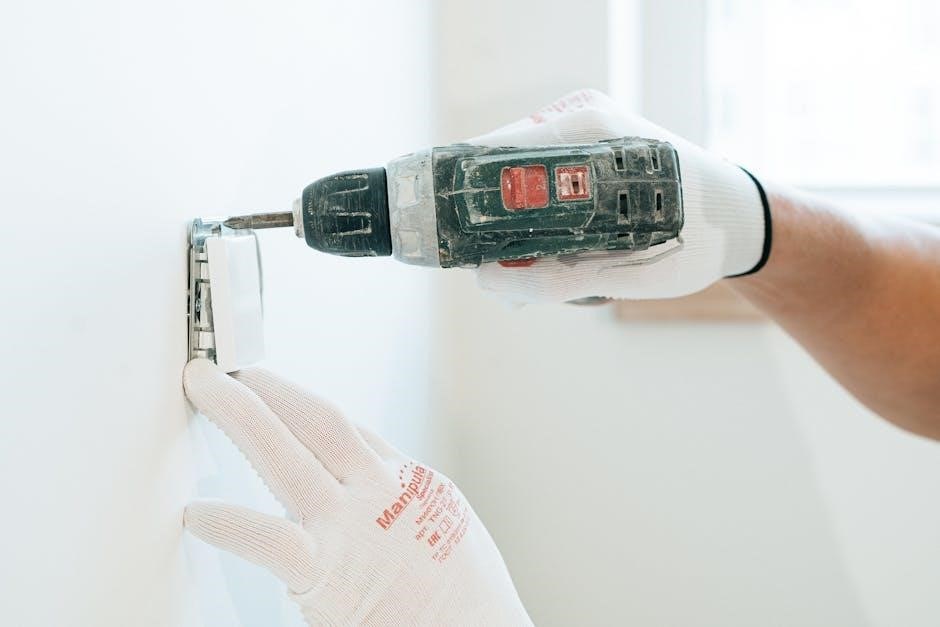
Maintenance and Upkeep
Regular inspections, cleaning, and filter replacements are essential for optimal performance. Inspect components for wear and schedule professional servicing as recommended to ensure long-term efficiency and safety.
6.1 Regular Cleaning and Filter Replacement
Regular cleaning and filter replacement are crucial for maintaining the efficiency and performance of the Goodman ARUF system. Filters should be cleaned or replaced every 1-3 months, depending on usage. Dust buildup on coils and vents can reduce airflow and energy efficiency, so they should be inspected and cleaned periodically. Proper maintenance ensures optimal air quality and prevents premature wear on components. Always refer to the Goodman ARUF installation manual PDF for specific cleaning instructions and recommended maintenance schedules to keep the system running smoothly and efficiently throughout its lifespan.
6.2 Inspecting and Replacing Worn Parts
Inspecting and replacing worn parts is essential to maintain the Goodman ARUF system’s performance and longevity. Regularly check components like belts, pulleys, and electrical connections for signs of wear. Loose or damaged parts can lead to inefficiency or system failure. Refer to the Goodman ARUF installation manual PDF for detailed inspection guidelines and replacement procedures. Replacing worn parts promptly ensures reliable operation, prevents further damage, and maintains energy efficiency. Always use genuine Goodman replacement parts to guarantee compatibility and performance. Proper maintenance helps extend the system’s lifespan and avoids costly repairs. Schedule professional inspections annually for optimal results.
6.3 Scheduling Professional Servicing
Scheduling professional servicing is crucial for maintaining the Goodman ARUF system’s efficiency and reliability. The Goodman ARUF installation manual PDF recommends annual professional inspections to ensure optimal performance. Trained technicians can identify potential issues before they escalate, such as refrigerant leaks or electrical malfunctions. Regular servicing also ensures compliance with safety standards and energy efficiency regulations. Additionally, professional maintenance can extend the system’s lifespan and prevent unexpected breakdowns; Always use certified HVAC professionals familiar with Goodman products to guarantee quality service. Scheduling regular check-ups helps maintain indoor air quality, reduces energy bills, and ensures the system operates at its best capacity throughout the year.

Troubleshooting Common Issues
The Goodman ARUF manual helps identify and resolve common issues, such as unusual noises or refrigerant leaks, ensuring system efficiency and safety through guided diagnostic steps.
7.1 Identifying and Diagnosing Common Problems
The Goodman ARUF manual provides detailed steps to identify common issues, such as unusual noises, refrigerant leaks, or system malfunction. Users should start by checking the P-trap installation and airflow restrictions, as these are frequent causes of noise or inefficiency. Referencing the manual’s troubleshooting section, issues like the system not turning off may require thermostat or electrical connections inspection. Leaks or water damage should prompt immediate action to prevent further damage. Always consult the installation manual for specific diagnostic procedures and solutions tailored to the ARUF series, ensuring safe and effective problem resolution.
7.2 Resetting the System and Basic Fixes
Resetting the Goodman ARUF system can often resolve minor issues. Start by turning the system off at the thermostat and circuit breaker, then wait 30 seconds before restarting. For basic fixes, check and clean the air filter, as a dirty filter can cause noise or inefficiency. Ensure proper drainage by verifying the P-trap installation, as outlined in the manual. If the system is not cooling or heating, inspect electrical connections and ensure all components are securely fastened. Refer to the troubleshooting guide in the manual for step-by-step solutions. Always follow safety precautions and consult a professional if issues persist or require advanced repairs.
7.3 When to Contact a Professional
If basic troubleshooting steps fail to resolve the issue, it is essential to contact a licensed HVAC professional. This is particularly important for complex problems such as faulty thermostat connections, refrigerant leaks, or compressor malfunctions. Additionally, if there are electrical Issues, unusual noises, or persistent performance problems, professional assistance is required. A professional can diagnose and repair issues that are beyond DIY fixes, ensuring system safety and efficiency. Always prioritize safety and avoid attempting repairs that require specialized tools or training. Regular servicing by a professional can also prevent future issues and maintain optimal system performance. Refer to the manual for guidance on when professional intervention is necessary.
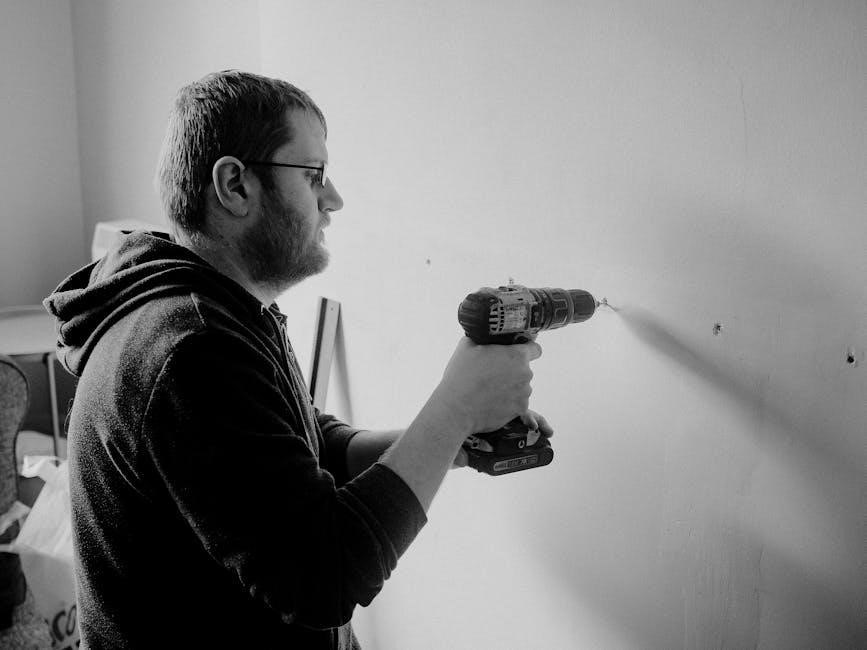
Compliance and Certifications
The Goodman ARUF series meets local building codes and energy efficiency standards, ensuring compliance with regulatory requirements. It holds ARI certification, confirming its performance and safety standards.
8.1 Meeting Local Building Codes and Regulations
The Goodman ARUF installation must comply with local building codes and regulations to ensure safety and efficiency. Proper permits and inspections are required. Compliance ensures legal operation and adherence to safety standards, preventing potential hazards. Always refer to local authorities for specific requirements and ensure the installation meets or exceeds them. This step is crucial for maintaining system reliability and avoiding legal issues. Failure to comply may result in penalties or system shutdown. Always verify with local regulations before proceeding with installation.
8.2 Ensuring Energy Efficiency Standards
The Goodman ARUF series is designed to meet or exceed energy efficiency standards, ensuring optimal performance while reducing energy consumption. Compliance with ENERGY STAR® and ARI certification guarantees adherence to industry benchmarks. Proper installation, as outlined in the manual, is critical to achieving rated efficiency levels. Features like multi-speed PSC blower motors and all-aluminum evaporator coils contribute to enhanced energy performance. Regular maintenance, such as filter replacement, further supports energy efficiency. Always verify local energy standards and ensure the system is installed to meet these requirements for long-term savings and environmental benefits. Refer to the manual for specific efficiency ratings and recommendations.



